TOBACCO FOR CIGARS - PICKING THE LEAVES
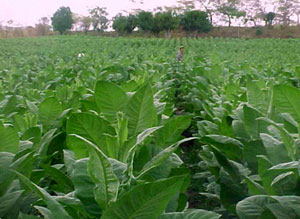
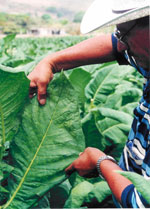 Tobacco cigars are handmade with a blend of tobacco leaves. There are three types of leaves on the tobacco plant.
Tobacco cigars are handmade with a blend of tobacco leaves. There are three types of leaves on the tobacco plant.
Each is named based on their location on the plant. The Ligero are at the top of the tobacco plant.
The Seco are those leaves in the middle of the plant and the Volado leaves are located at the bottom of the plant. The strongest tobacco is the Ligero, the Seco provides texture and taste, and the Volado serves as mild filler for the cigars.
Only when the tobacco leaves are perfect, are they picked. The tobacco plant normally has 16 to 17 leaves. Only two to three leaves are picked at a time, and only after reaching perfect maturity. Growing tobacco and deciding when to pick the leaves is an art and requires years of training and hands on experience. Every step affects the final product, the cigar.
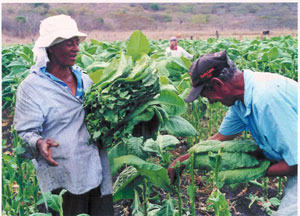

It takes constant care of the tobacco plants and fields to achieve perfect tobacco suitable for Boutique premium cigars.
This includes care before and after the harvest.
Most of the pickers have been doing it for years. They look forward to the crop harvesting season and challenge each other by competing for the finest leaf of the harvest.
After the leaves are picked they are taken to Tabacalera Esteli’s Curing House by tractor. The curing house is a Cuban-style “casa de tabaco”. It is the size of about two football fields long and its’ construction is specific for drying and curing tobacco.
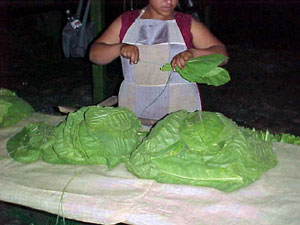
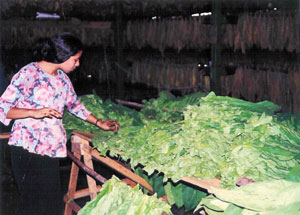 This is totally done by hand with strict supervision. After this tedious process, the tobacco leaves are individually hand sewn together in pairs through the stem. The sewn pairs are hung on long poles.
This is totally done by hand with strict supervision. After this tedious process, the tobacco leaves are individually hand sewn together in pairs through the stem. The sewn pairs are hung on long poles.
The poles, each with about 100 leaves, are placed in the curing house at different levels. Based on the type of leaf and its size, they are placed higher or lower from the roof.

The combination of the bright sun’s heat and the raw cedar buildings structure creates a sauna-like condition. This perfect condition forces the leaves’ moisture to dissipate and the leaves’ colors changes from rich green to yellow, and then finally to different shade of brown.
of brown.
When the tobacco leaves are dried and ready, they are removed from the poles and placed in piles of fifty leaves. The small piles are then arranged into larger stacks and the fermentation process begins.
The pressure from the leaves stacked up on each other, along with the heat and humidity, all add to the leaves fermentation and to the release of their impurities. Throughout the clock, water is sprayed on the stacks of tobacco leaves to maintain proper fermentation temperatures. The heat in the middle of the stack can go up to 160 degrees Fahrenheit. If the temperatures are allowed to go higher the leaves will burn and spoil. It is a careful balancing act which requires 24 hours of constant supervision. This “sweating” process removes oils, sap, ammonia, tar and nicotine from the leaves. Throughout this 35 to 45 day process, workers break up the piles and restack them so that all the leaves are cured equally. After stacking and restacking many times, the fermentation process is finished. The tobacco leaves are then moved on to the aging process.
Learn More. Continue to:
Wholesale Tobacco Aging
Handmade Cigars
Aged Cigars
Cigar Boxes
Or Return to:


